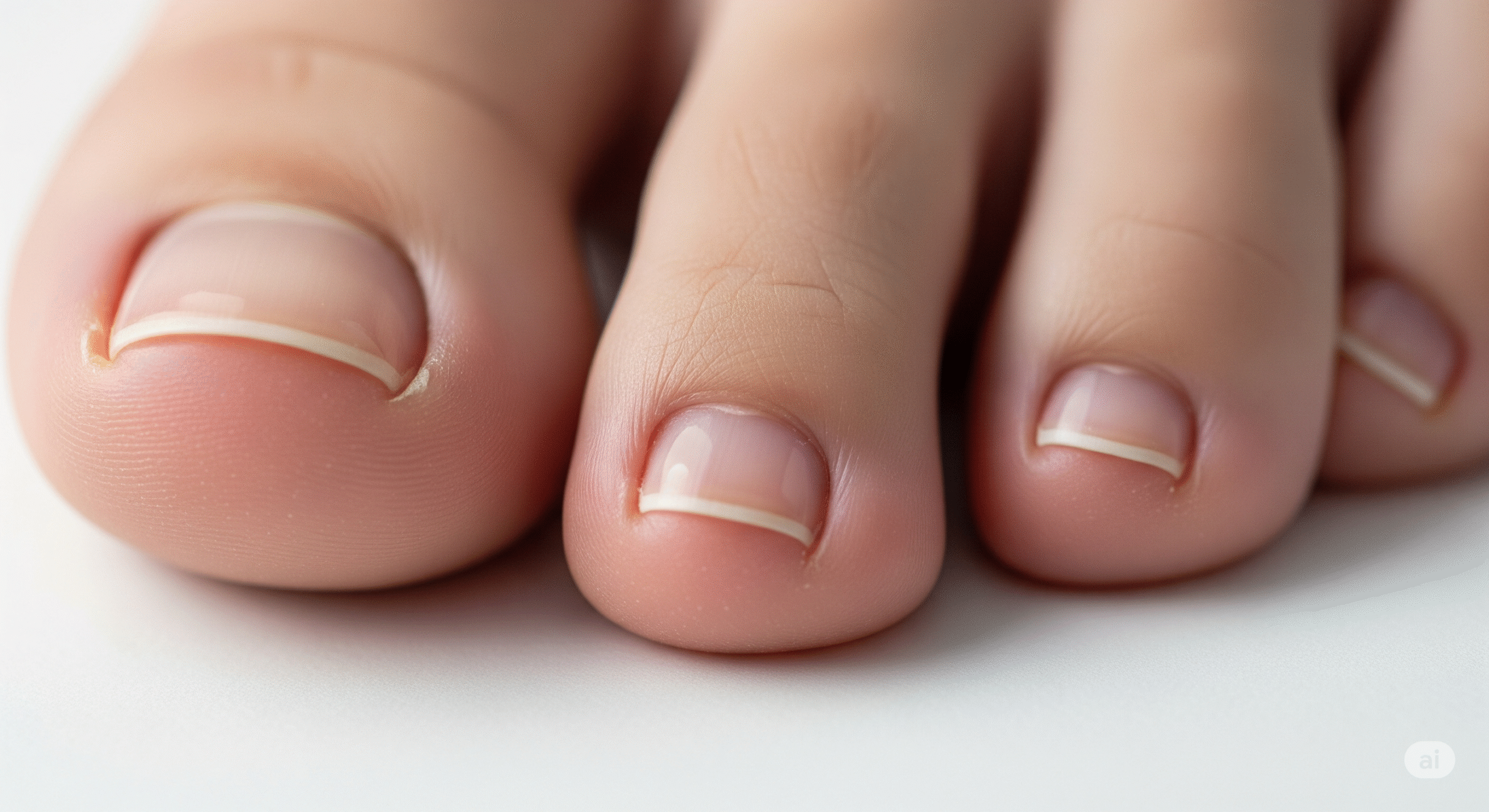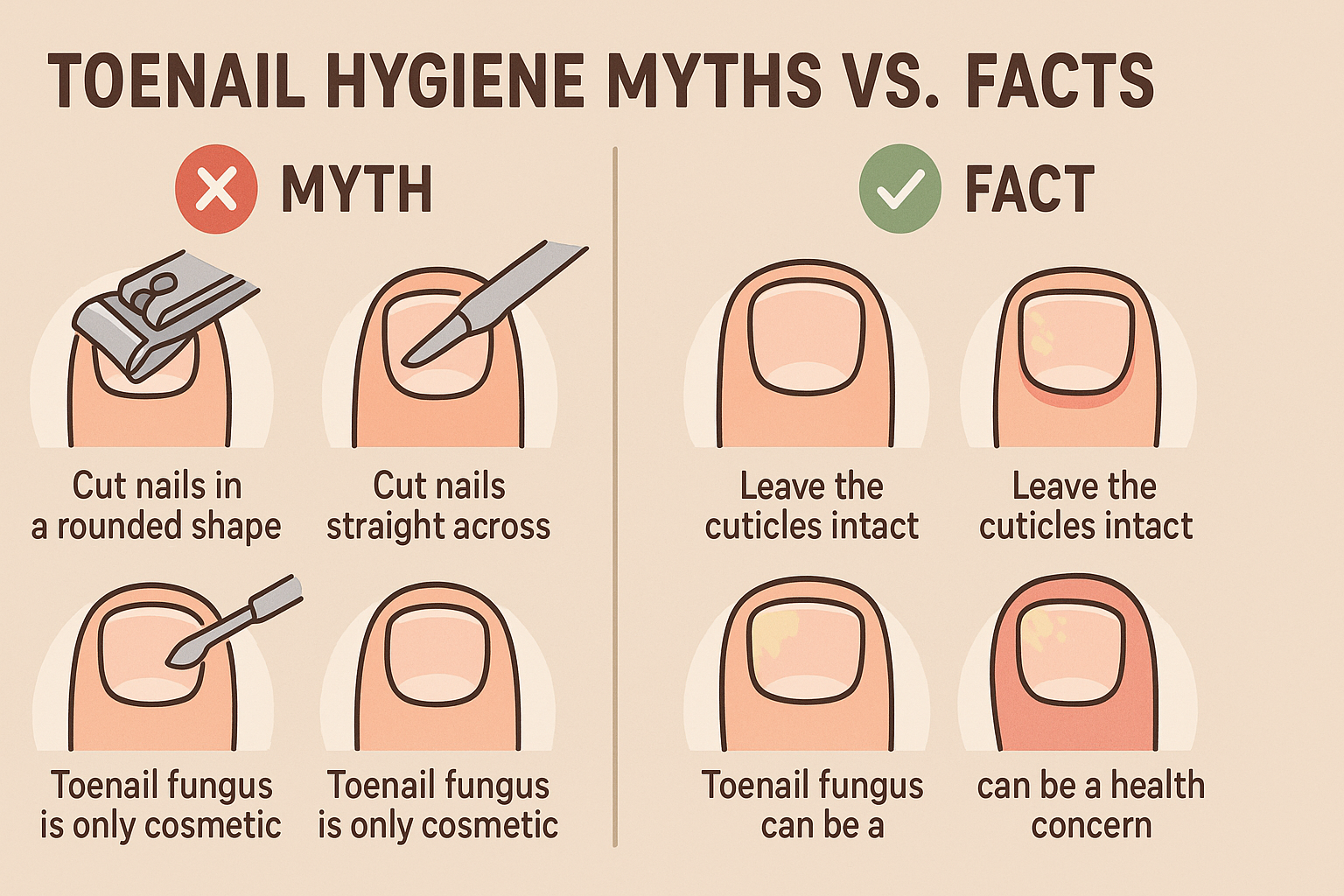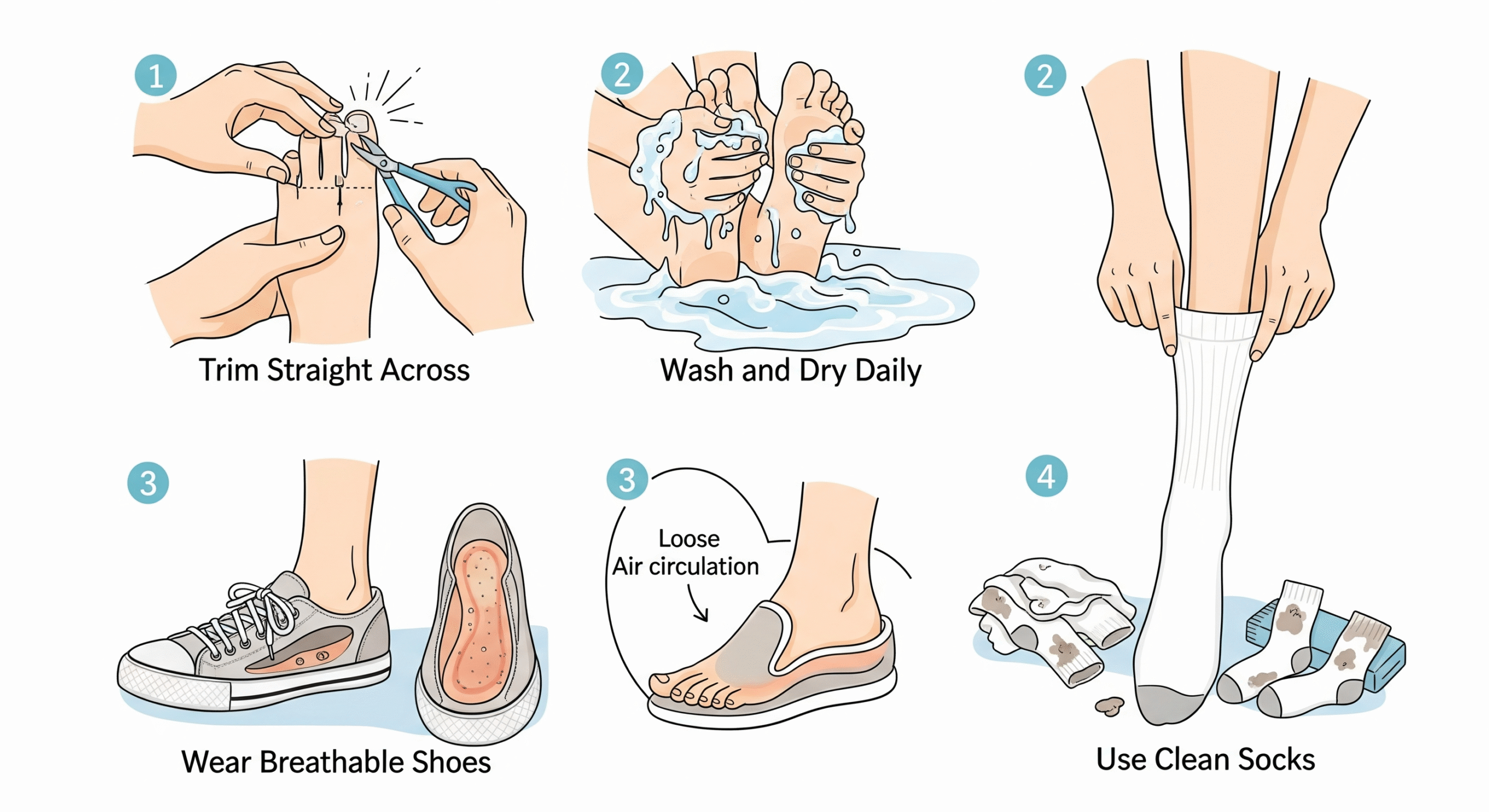Ultimate Toenail Hygiene Guide
Prevent Fungus, Ingrown Nails, and Keep Your Feet Healthy

Our feet carry us through life, yet they are often the most neglected part of our bodies. Poor toenail hygiene is a silent culprit behind a myriad of painful and unsightly conditions, from stubborn fungal infections to debilitating ingrown nails. Many people underestimate the importance of proper foot care, leading to chronic issues that can impact mobility, confidence, and overall well-being. The good news is that maintaining healthy toenails doesn't require complex procedures or expensive treatments. With a few simple, consistent practices, you can prevent most common toenail problems and ensure your feet remain healthy and comfortable. This comprehensive guide will walk you through the essential steps of toenail hygiene, debunk common myths, and provide you with actionable tips to keep your feet in prime condition, saving you time, money, and discomfort in the long run.
Debunking Common Toenail Hygiene Myths
Before diving into the best practices, let's clear up some common misconceptions about toenail care that can actually do more harm than good.
This is a widespread myth that often leads to the very problem it aims to prevent. Cutting toenails in a curved shape, especially too short or down the sides, encourages the nail to grow into the surrounding skin, leading to painful ingrown toenails. The correct method is to cut them straight across, ensuring the corners remain slightly extended beyond the skin.
Your cuticles serve as a natural protective barrier against bacteria and fungi. Cutting or aggressively pushing back your cuticles can break this barrier, making your nails more susceptible to infections, including fungal ones. It's best to gently push them back after a shower or bath, or leave them alone entirely.
While toenail fungus (onychomycosis) can certainly be unsightly, it's far from just a cosmetic problem. If left untreated, fungal infections can spread to other nails, the skin (leading to athlete's foot), and even cause pain, discomfort, and difficulty walking. For individuals with diabetes or compromised immune systems, it can lead to more serious complications like cellulitis or open sores.
While a base coat can protect against staining, continuously wearing nail polish, especially dark colors, can trap moisture and create an ideal environment for fungal growth. It also prevents your nails from breathing, which can lead to discoloration and weakening. It's advisable to give your nails polish-free breaks regularly.

Essential Toenail Hygiene Practices for Healthy Feet
Implementing these simple yet effective practices into your routine can make a significant difference in preventing toenail problems and maintaining overall foot health.
This is perhaps the most crucial step. Always trim your toenails straight across, not in a curve. Avoid cutting them too short, as this can lead to ingrown nails. Use clean, sharp nail clippers specifically designed for toenails. If your nails are thick, trim them after a shower or bath when they are softer.
- Frequency: Trim every 6-8 weeks, or as needed.
- Tools: Use dedicated toenail clippers, not fingernail clippers.
- Aftercare: Gently file any sharp edges with an emery board.
Wash your feet daily with mild soap and water. Pay special attention to the spaces between your toes, as these areas are prone to moisture retention and fungal growth. After washing, dry your feet thoroughly, especially between the toes. This simple step is a powerful deterrent against fungal infections.
- Frequency: Daily.
- Method: Use mild soap, rinse well, and pat dry thoroughly.
- Extra Tip: Consider using a soft towel or even a hairdryer on a cool setting for complete drying between toes.
Your shoes play a significant role in foot health. Opt for shoes made of natural, breathable materials like leather, canvas, or mesh. Avoid tight, non-breathable shoes that trap moisture and create a warm, humid environment – a perfect breeding ground for fungi. Ensure your shoes fit well, allowing your toes to wiggle freely.
- Materials: Leather, canvas, mesh.
- Fit: Ample toe room, comfortable.
- Avoid: Synthetic, tight, poorly ventilated shoes.
Wearing the same pair of shoes every day doesn't allow them to dry out completely from sweat and moisture. Rotate your shoes, giving each pair at least 24-48 hours to air out and dry thoroughly between wears. You can also use shoe deodorizers or antifungal sprays to keep them fresh and inhibit microbial growth.
- Practice: Rotate shoes daily.
- Drying: Allow 24-48 hours for shoes to dry completely.
- Maintenance: Use antifungal sprays or powders.
Cotton socks absorb moisture and hold it against your skin, creating a damp environment. Switch to socks made of moisture-wicking synthetic materials (like polyester, nylon, or acrylic) or wool blends. These materials draw sweat away from your skin, keeping your feet drier. Change your socks daily, or more frequently if your feet sweat excessively or after exercise.
- Materials: Synthetic blends, wool.
- Frequency: Change daily, or more often if needed.
- Benefit: Keeps feet dry, reduces fungal risk.
Public showers, locker rooms, swimming pools, and gyms are hotbeds for fungal spores. Always wear flip-flops or shower shoes in these environments to avoid direct contact with contaminated surfaces. This simple protective measure can significantly reduce your risk of contracting athlete's foot and toenail fungus.
- Where: Public showers, locker rooms, pools, gyms.
- What: Wear flip-flops or shower shoes.
- Why: Prevents direct contact with fungi.
If you perform your own pedicures at home, ensure your nail clippers, files, and other tools are clean and disinfected after each use. You can sterilize metal tools by soaking them in rubbing alcohol or a disinfectant solution. If you visit a nail salon, confirm that they follow strict sterilization protocols for their equipment.
- Home Use: Disinfect tools after each use.
- Salon Visits: Verify proper sterilization.
- Method: Rubbing alcohol or disinfectant solution.

When to Consider Targeted Support: The Role of Supplements
While excellent hygiene practices are the foundation of healthy toenails, sometimes they aren't enough, especially if you're already dealing with a persistent issue like toenail fungus or if your body's natural defenses need a boost. This is where high-quality, targeted supplements can play a crucial role, offering a convenient and effective way to support your foot health from within.
Think about it: consistently applying topical treatments can be time-consuming and often fails to reach the deep-seated fungal infections within the nail bed. Oral medications from a doctor can be effective but may come with side effects. Supplements, on the other hand, provide your body with a concentrated dose of powerful antifungal ingredients and immune-boosting nutrients that work systemically to combat the infection, strengthen your nails, and prevent future outbreaks. They can save you significant time and money compared to endless topical applications or repeated doctor visits.
Key Ingredients in Effective Fungus Supplements:
- Undecylenic Acid: A potent fatty acid with strong antifungal properties, often derived from castor bean oil.
- Oregano Oil: Contains carvacrol, a compound known for its powerful antifungal and antibacterial effects.
- Tea Tree Oil: A well-known natural antiseptic and antifungal agent.
- Berberine: A natural compound found in several plants, recognized for its broad-spectrum antimicrobial activity.
- Probiotics: Support a healthy gut microbiome, which is intrinsically linked to a strong immune system, crucial for fighting off fungal infections.
- Vitamins & Minerals: Biotin, Zinc, Vitamin C, and Vitamin E support overall nail health and immune function.
🚀 Accelerate Your Foot Health Journey!
Don't let toenail problems hold you back. While good hygiene is essential, targeted supplements can provide the internal support your body needs to effectively combat fungal infections, strengthen your nails, and achieve lasting clarity. Save time and money on ineffective remedies and invest in a solution that works from the inside out.
Discover Top Fungus Supplements →Scientifically-backed formulations for rapid results
When to Seek Professional Help
While these hygiene practices are highly effective for prevention and mild issues, it's important to know when to consult a healthcare professional, especially a podiatrist or dermatologist.
- If you suspect a severe fungal infection that isn't responding to over-the-counter treatments or supplements.
- If you have an ingrown toenail that is painful, red, swollen, or shows signs of infection (pus, fever).
- If you have diabetes, poor circulation, or a compromised immune system, any foot or nail issue should be addressed by a doctor promptly.
- If your nail discoloration or changes are accompanied by other unusual symptoms.
Frequently Asked Questions
💡 Take Control of Your Foot Health!
You now have the knowledge to maintain impeccable toenail hygiene and prevent common problems. For those stubborn issues or to give your body an extra edge in fighting off infections, remember the power of targeted supplements. They are a smart investment for long-term foot health and confidence.
Explore Advanced Foot Health Solutions →Unlock healthier, happier feet today
Scientific References
- American Academy of Orthopaedic Surgeons. (n.d.). Ingrown Toenail. Retrieved from https://orthoinfo.aaos.org/en/diseases--conditions/ingrown-toenail/
- Centers for Disease Control and Prevention. (2021). Fungal Nail Infections. Retrieved from https://www.cdc.gov/fungal/nail-infections.html
- Mayo Clinic. (2023). Ingrown toenail. Retrieved from https://www.mayoclinic.org/diseases-conditions/ingrown-toenail/symptoms-causes/syc-20351711
- Mayo Clinic. (2023). Nail fungus. Retrieved from https://www.mayoclinic.org/diseases-conditions/nail-fungus/symptoms-causes/syc-20353294
- Gupta, A. K., & Cooper, E. A. (2008). Onychomycosis: A review. Journal of the American Academy of Dermatology, 59(5), 842-859.
- Singal, A., & Arora, R. (2015). Nail as a window to systemic diseases. Indian Dermatology Online Journal, 6(2), 67–74.
- Shemer, A., & Nathansohn, N. (2015). Prevention of tinea pedis and onychomycosis. Clinics in Dermatology, 33(3), 333-338.
- Elewski, B. E. (1998). Onychomycosis: Pathogenesis, diagnosis, and management. Clinical Microbiology Reviews, 11(3), 415-429.
- Ghannoum, M. A., & Isham, N. (2014). Fungal nail infections (onychomycosis): A review. Journal of the American Academy of Dermatology, 71(5), 937-951.
- Tosti, A., & Piraccini, B. M. (2008). Nail disorders. In Bolognia, J. L., Jorizzo, J. L., & Rapini, R. P. (Eds.), Dermatology (2nd ed., pp. 1069-1084). Mosby Elsevier.

Wagner P
Natural Health Researcher & Founder of LabOfficial
Wagner is dedicated to researching and testing safe, natural solutions for everyday health problems. Through LabOfficial, he shares effective home remedies and recommends science-backed supplements that simplify healing and restore well-being without side effects.
Disclaimer: The information contained in this article is for educational and informational purposes only. It is not a substitute for professional medical advice, diagnosis, or treatment. Always seek the advice of a qualified health professional before starting any new diet, exercise program, or supplementation.